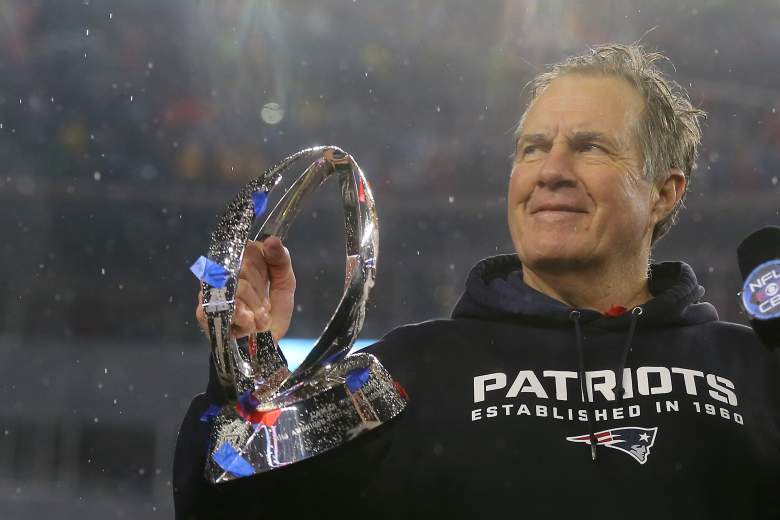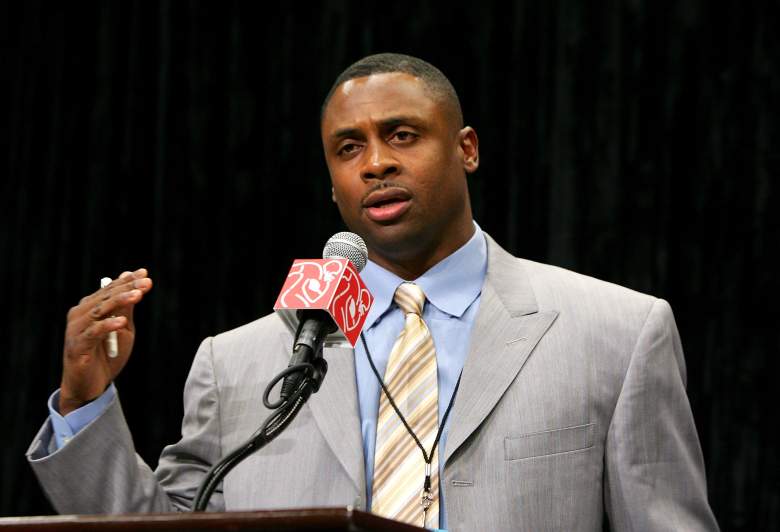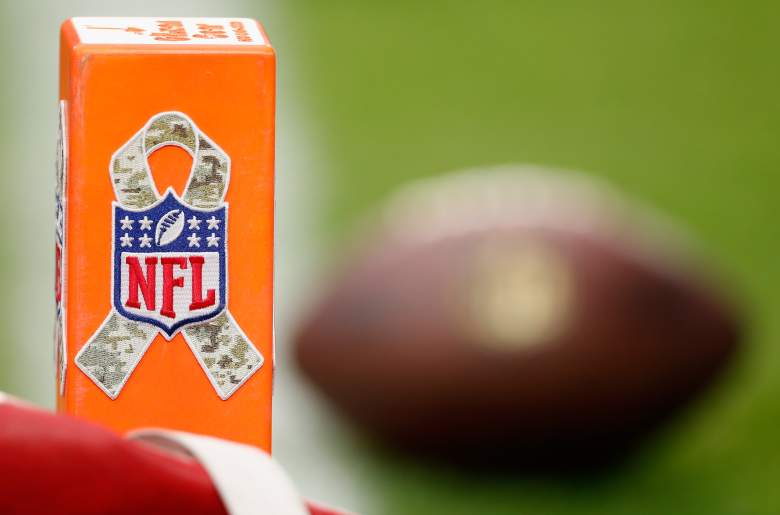
Bill Belichick celebrates with the Lamar Hunt Trophy after winning his sixth AFC title game. (Getty)
The Patriots have won the AFC Championship game and are headed to the Super Bowl — Tom Brady’s record-breaking sixth appearance. But all anyone can talk about in the wake of the Patriots’ blowout of the Colts is whether the Pats deflated game balls before the game.
Chris Mortensen reported Tuesday night that 11 of the 12 balls used Sunday by the New England offense were 2 pounds per square inch below the league’s requirement.
The league has yet to announce if and how the team and staff will be punished and is still investigating how the balls became under-inflated.
Here’s what you need to know about the league’s policies on game balls:
NFL Rules & Regulations on Inflation of Game Balls

(Getty)
Rule 2, Section 1 of the NFL Rule Book says that the balls must be a certain weight, length, width and even color.
The Ball must be a “Wilson,” hand selected, bearing the signature of the Commissioner of the League, Roger Goodell.
The ball shall be made up of an inflated (12 1/2 to 13 1/2 pounds) urethane bladder enclosed in a pebble grained, leather case (natural tan color) without corrugations of any kind. It shall have the form of a prolate spheroid and the size and weight shall be: long axis, 11 to 11 1/4 inches; long circumference, 28 to 28 1/2 inches; short circumference, 21 to 21 1/4 inches; weight, 14 to 15 ounces.
The Referee shall be the sole judge as to whether all balls offered for play comply with these specifications. A pump is to be furnished by the home club, and the balls shall remain under the supervision of the Referee until they are delivered to the ball attendant just prior to the start of the game.
Mortensen’s ESPN report was the first to confirm that 11 of the 12 Patriot balls were in fact 2 pounds per square inch under the leagues requirement.
NFL Rules & Regulations on How Game Balls Are Handled

(Getty)
Rule 2, Section 2 of the Rule Book addressed the preparation that goes into getting the game balls ready. This is a process that includes the teams providing their own balls and the refs checking and marking them.
Each team will make 12 primary balls available for testing by the Referee two hours and 15 minutes prior to the starting time of the game to meet League requirements. The home team will also make 12 backup balls available for testing in all stadiums. In addition, the visitors, at their discretion, may bring 12 backup balls to be tested by the Referee for games held in outdoor stadiums. For all games, eight new footballs, sealed in a special box and shipped by the manufacturer to the Referee, will be opened in the officials’ locker room two hours and 15 minutes prior to the starting time of the game.
These balls are to be specially marked by the Referee and used exclusively for the kicking game.
In the event a home team ball does not conform to specifications, or its supply is exhausted, the Referee shall secure a proper ball from the visitors and, failing that, use the best available ball. Any such circumstances must be reported to the Commissioner.
In case of rain or a wet, muddy, or slippery field, a playable ball shall be used at the request of the offensive team’s center.
The Game Clock shall not stop for such action (unless undue delay occurs).
Note: It is the responsibility of the home team to furnish playable balls at all times by attendants from either side of the playing field.
Since the Patriots were using their own 12 balls, and the Colts were using their own 12 balls, the only time the Colts possessed a Patriots ball was on Tom Brady’s only interception of the game.
Background: Quarterbacks Often Have Strong Preferences on How Balls Are Prepared
This isn’t the first time attention has been brought to quarterbacks having a preference over the footballs they use.
Aaron Rodgers told ESPN Milwaukee that his large hands make it easier to grip an over inflated football, according to CBS. He said that, in his experience, the refs often take air out of the balls when inspecting them.
I have a major problem with the way it goes down, to be honest with you. The majority of the time, they take air out of the football. I think that, for me, is a disadvantage. … I just have a hard time throwing a flat football. … My belief is that there should be a minimum air-pressure requirement but not a maximum. There’s no advantage, in my opinion. We’re not kicking the football. There’s no advantage in having a pumped-up football.
The New York Times reported that it takes months to get a football to Eli Manning’s preference, saying, “the ball has been scoured, scrubbed, soaked and seasoned, a breaking-in process that takes months and ensures that every ball used by the Giants in a game will meet Manning’s exact preferences. The leather will have been softened, the grip enhanced and the overall feel painstakingly assessed.”
It isn’t the first time deflation has been an issue. In 2012, USC was found committing the same offense in a game against Oregon. In this case, USC said they had no knowledge of it happening and that a student manager acted on his own accord when he did it, according to a statement from the team quoted by USA Today.
Game officials discovered and re-inflated three of the balls before the game and two others at halftime. All balls were regulation in the second half.
When informed of this allegation by the Pac-12, USC investigated it immediately. The student manager confirmed that he had, without the knowledge of, or instruction from, any USC student-athlete, coach, staff member or administrator, deflated those game balls after they had been tested and approved by officials prior to the game.
The student manager was then fired by the team.


Comments
NFL Rules & Policy for Inflating & Deflating Game Balls